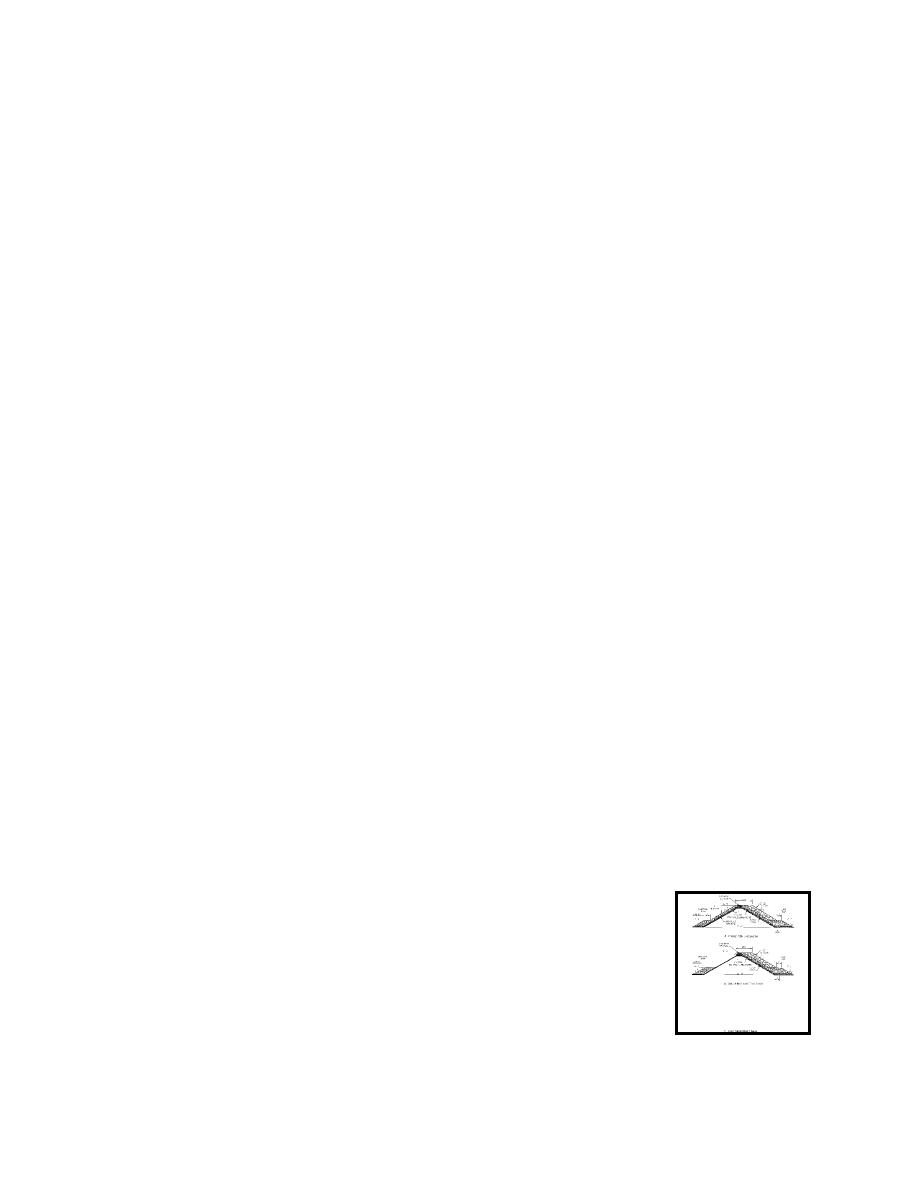 |
||
|
|
||
|
Page Title:
SUMMARY OF FIELD EXPERIENCES (CASE STUDIES) |
||
| |||||||||||||||
|
|
 ERDC TN-DOER-C18
August 2000
Synthetic liners: a flexible geomembrane liner in the bottom and on the inside face of the
CDF dikes.
Surface covers: a layer of material placed on top of contaminated sediment to reduce access
by plants and animals, or to reduce infiltration of precipitation into the fill, thereby reducing
leachate volume.
Dike cores: dikes constructed using a layer or core of material that reduces permeability to
retard seepage.
Cutoff walls: installation of a barrier, e.g., a slurry wall or sheetpile, to reduce leachate flow
from the CDF or to divert groundwater around the CDF.
Wick drains: promotion of dewatering and consolidation by providing for subsurface
drainage using vertical wicks--reduces hydraulic conductivity throughout the depth of the
CDF.
Reactive barriers: dikes constructed using a layer of material that provides for treatment of
seepage by filtration, sorption, biotreatment, or other means.
Combinations of active and passive techniques: in situ treatment, including biological,
chemical, and electrochemical/electrokinetic processes, as well as pump and treat techniques,
are innovations that may be combined with containment measures for additional control if
required.
SUMMARY OF FIELD EXPERIENCES (CASE STUDIES): Containment features are not
widely practiced for dredged material management because simply retaining sediment solids in a
CDF has adequately met regulatory requirements for most navigation dredging projects. However,
CDFs are often recommended and have been required for some sites receiving highly contaminated
material or for sites located in environmentally sensitive areas. This technical note summarizes a
number of case studies, both foreign and domestic. Many of the case studies contain only minimal
information because no detailed design documents or data are available. In some cases, the detailed
design reports that may exist are in other languages and only summaries are available in English.
Table 1 lists the sites and containment features or measures, and descriptions of the designs and
construction methods used for each site are given in the paragraphs that follow.
Chicago CDF Liner. The Chicago area CDF is a 170,000-sq-m nearshore site located in Calumet
Harbor, Chicago, IL. This CDF is the first known site for contaminated dredged material in which
a synthetic liner was placed in-water (Savage 1986). The CDF was constructed with a rubble mound
dike with a core of prepared (graded) limestone. Graded limestone dikes have been used at a number
of CDFs in the Great Lakes region. The limestone material in the dike core
was composed of a grade commonly referred to as 10 centimeter minus. Such
dikes were designed to allow for flow of lake water through the dike in the
initial stages of filling, with the dike "plugging" as filling progressed. A
synthetic membrane liner was placed along the inside face of the dike to
prevent excessive migration of fine dredged material solids through the To view figure
prepared limestone dike core as the CDF was filled. A dike cross-section is larger, click here
illustrated in Figure 5. The liner was constructed in 60-m-long sections. The
Figure 5
liner material was a flexible plastic of 30-mil thickness with polyester fabric
4
|
|
Privacy Statement - Press Release - Copyright Information. - Contact Us - Support Integrated Publishing |